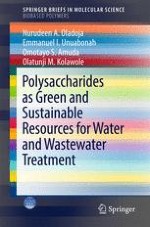
2017 | OriginalPaper | Chapter
1. Operational Principles and Material Requirements for Coagulation/Flocculation and Adsorption-based Water Treatment Operations
Authors : Nurudeen A. Oladoja, Ph.D., Emmanuel I. Unuabonah, Ph.D., Omotayo S. Amuda, Ph.D., Olatunji M. Kolawole, Ph.D.
Published in: Polysaccharides as a Green and Sustainable Resources for Water and Wastewater Treatment
Publisher: Springer International Publishing
Activate our intelligent search to find suitable subject content or patents.
Select sections of text to find matching patents with Artificial Intelligence. powered by
Select sections of text to find additional relevant content using AI-assisted search. powered by